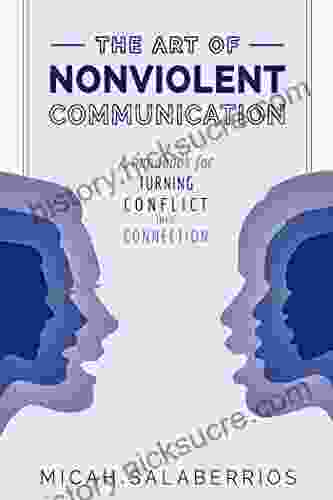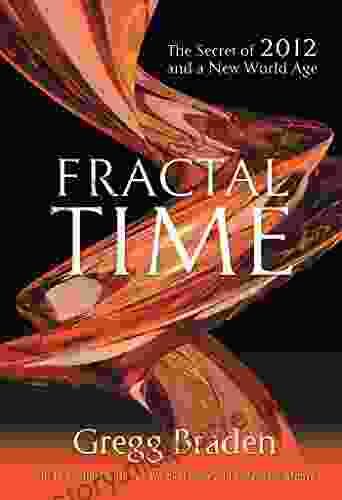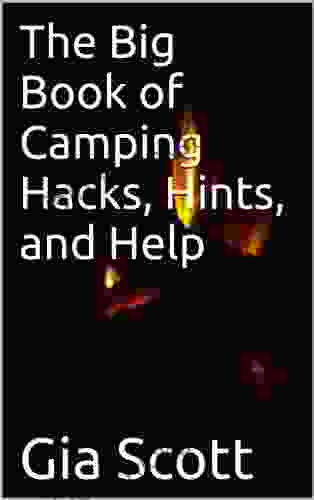The Art of Nonviolent Communication: A Comprehensive Guide to Building Healthy Relationships

Nonviolent Communication (NVC) is a powerful communication tool that can help you build healthy relationships, resolve conflicts peacefully, and create a more compassionate world. Developed by Marshall Rosenberg, NVC is based on the principle that all human beings have the same basic needs, and that violence is always a result of unmet needs.
When we communicate in a nonviolent way, we focus on expressing our own needs and feelings without blaming or judging others. We also listen to others with empathy, trying to understand their needs and feelings without interrupting or trying to fix their problems. By communicating in this way, we can create a more cooperative and compassionate world.
NVC is based on four main components:
4.8 out of 5
| Language | : | English |
| File size | : | 897 KB |
| Text-to-Speech | : | Enabled |
| Screen Reader | : | Supported |
| Enhanced typesetting | : | Enabled |
| Word Wise | : | Enabled |
| Print length | : | 63 pages |
| Lending | : | Enabled |
- Observations: When you communicate in NVC, you start by making observations about the world around you. These observations should be specific and objective, without any judgment or interpretation. For example, instead of saying "You're always late," you could say "I noticed that we've had to postpone our meetings several times recently."
- Feelings: Once you've made an observation, you can then identify the feelings that you're experiencing. These feelings should be expressed in the first person, using "I" statements. For example, instead of saying "You make me angry," you could say "I feel angry when we have to postpone our meetings."
- Needs: Behind every feeling is a need. Needs are universal human desires, such as the need for connection, security, and appreciation. When you identify the need that is driving your feelings, you can then communicate it to others in a clear and concise way. For example, instead of saying "You're not supportive," you could say "I need more support from you."
- Requests: Once you've identified your need, you can then make a request to others. Requests should be specific, actionable, and respectful. For example, instead of saying "You need to change," you could say "I would like you to be more supportive of me."
NVC can be used in all aspects of your life, from your personal relationships to your professional interactions. Here are a few examples of how you can use NVC in everyday life:
- To resolve conflicts: When you're in a conflict with someone, try using NVC to communicate your needs and feelings. By ng this, you can help to defuse the conflict and find a mutually acceptable solution.
- To build stronger relationships: NVC can help you to build stronger relationships by improving your communication and empathy skills. When you communicate in a nonviolent way, you can create a more cooperative and compassionate environment.
- To create a more peaceful world: NVC can help to create a more peaceful world by reducing violence and promoting cooperation. When people are able to communicate their needs and feelings in a nonviolent way, they are less likely to resort to violence.
Nonviolent Communication is a powerful tool that can help you build healthy relationships, resolve conflicts peacefully, and create a more compassionate world. By learning and practicing the principles of NVC, you can improve your communication skills, build stronger relationships, and make a positive impact on the world.
4.8 out of 5
| Language | : | English |
| File size | : | 897 KB |
| Text-to-Speech | : | Enabled |
| Screen Reader | : | Supported |
| Enhanced typesetting | : | Enabled |
| Word Wise | : | Enabled |
| Print length | : | 63 pages |
| Lending | : | Enabled |
Do you want to contribute by writing guest posts on this blog?
Please contact us and send us a resume of previous articles that you have written.
 Fiction
Fiction Non Fiction
Non Fiction Romance
Romance Mystery
Mystery Thriller
Thriller SciFi
SciFi Fantasy
Fantasy Horror
Horror Biography
Biography Selfhelp
Selfhelp Business
Business History
History Classics
Classics Poetry
Poetry Childrens
Childrens Young Adult
Young Adult Educational
Educational Cooking
Cooking Travel
Travel Lifestyle
Lifestyle Spirituality
Spirituality Health
Health Fitness
Fitness Technology
Technology Science
Science Arts
Arts Crafts
Crafts DIY
DIY Gardening
Gardening Petcare
Petcare Simon Pridmore
Simon Pridmore Christopher Van Tilburg
Christopher Van Tilburg John Miller
John Miller Dr Mark Sircus
Dr Mark Sircus Leon Edward
Leon Edward David Klausmeyer
David Klausmeyer Gene Hamilton
Gene Hamilton John Snygg
John Snygg Harvey Penick
Harvey Penick Torre Deroche
Torre Deroche Sarah Guthals
Sarah Guthals Kimberly Seals Allers
Kimberly Seals Allers David J Anderson
David J Anderson Tigran Bagdasaryan
Tigran Bagdasaryan Mike Liner
Mike Liner Panos Y Papalambros
Panos Y Papalambros Zigzag English
Zigzag English Harry Vardon
Harry Vardon Barbara Brown Taylor
Barbara Brown Taylor Ken Adcock
Ken Adcock Steve Bo Keeley
Steve Bo Keeley Don Kirk
Don Kirk Jason Reynolds
Jason Reynolds Revised Edition Kindle Edition
Revised Edition Kindle Edition Jean Beaman
Jean Beaman Benny Lewis
Benny Lewis Charles C Pinter
Charles C Pinter Jeff Galloway
Jeff Galloway April Lara
April Lara Emma Frisch
Emma Frisch William Lanouette
William Lanouette Tracy Owens
Tracy Owens Philip C Plait
Philip C Plait Felicity Pulman
Felicity Pulman Michelle Segar Phd
Michelle Segar Phd Kristen Radtke
Kristen Radtke Second Edition Revised Kindle Edition
Second Edition Revised Kindle Edition Samantha Michaels
Samantha Michaels Antoine Savine
Antoine Savine Joe Brooks
Joe Brooks Robbie Thompson
Robbie Thompson Joni L Mihura
Joni L Mihura Lj Andrews
Lj Andrews Laura Stamm
Laura Stamm Mark Sundeen
Mark Sundeen Jackson Carter
Jackson Carter Giovanni Amato
Giovanni Amato Lessie Myles
Lessie Myles Jordan Christy
Jordan Christy Randy Gerke
Randy Gerke You Fuguruma
You Fuguruma Dm Fitzgerald
Dm Fitzgerald Roberta M Gilbert
Roberta M Gilbert Tommy Nelson
Tommy Nelson Jessica Dixie Mills
Jessica Dixie Mills Shari Stauch
Shari Stauch Alan Bass
Alan Bass Amy R Carpenter
Amy R Carpenter Thema Bryant Davis
Thema Bryant Davis Mark Harper
Mark Harper Donald Frias
Donald Frias Bart Yasso
Bart Yasso Tom Igoe
Tom Igoe Mark Kurlansky
Mark Kurlansky Cheng Liu
Cheng Liu Jacki Pritchard
Jacki Pritchard William Murakami Brundage
William Murakami Brundage Chris Carmichael
Chris Carmichael Maya Angelou
Maya Angelou Cynthia Chen Mcternan
Cynthia Chen Mcternan Louise Douglas
Louise Douglas Joy Jones
Joy Jones Melissa Sperka
Melissa Sperka Jen L Grey
Jen L Grey Sherry Blackman
Sherry Blackman Lindsay Powers
Lindsay Powers Eric Coll
Eric Coll Roger Guay
Roger Guay Diana Raab
Diana Raab Louie Giglio
Louie Giglio Eliana De Las Casas
Eliana De Las Casas Mario Batali
Mario Batali William Hanson
William Hanson Katharine A Phillips
Katharine A Phillips Richard Grant
Richard Grant James Cordrey
James Cordrey Steve Sheward
Steve Sheward Eugene V Resnick
Eugene V Resnick Karen Gravelle
Karen Gravelle James Atkinson
James Atkinson Daniela Sacerdoti
Daniela Sacerdoti Marge Foley
Marge Foley Chris Duff
Chris Duff Caroline Gallup
Caroline Gallup Fiore Tartaglia
Fiore Tartaglia Erving Goffman
Erving Goffman Paula Hendricks
Paula Hendricks Herbert Warren Wind
Herbert Warren Wind Mark Broadie
Mark Broadie Robert J Sweet
Robert J Sweet Ariella Moon
Ariella Moon Austyn Lee
Austyn Lee Henrik Gert Larsen
Henrik Gert Larsen Peter Nabokov
Peter Nabokov Bernard Darwin
Bernard Darwin Joe Farinaccio
Joe Farinaccio Jenny B Jones
Jenny B Jones Elton Moraes
Elton Moraes Joe Kelsey
Joe Kelsey Virginia M Axline
Virginia M Axline Marie Tillman
Marie Tillman Sonia Weyers
Sonia Weyers Karen Newell
Karen Newell Iain Mcgilchrist
Iain Mcgilchrist Anya Kuvarzina
Anya Kuvarzina Chuck Carlson
Chuck Carlson Matthew M Hurley
Matthew M Hurley George Kimball
George Kimball Christina Thompson
Christina Thompson Ehren Myers
Ehren Myers Susie Johns
Susie Johns R Scott Jones
R Scott Jones Abby Knox
Abby Knox Herbert L Gravitz
Herbert L Gravitz Donald B Deyoung
Donald B Deyoung Bonnie Landry
Bonnie Landry Linda Hibbs
Linda Hibbs Geraldine Brooks
Geraldine Brooks Wyatt Mclaren
Wyatt Mclaren Territory Supply
Territory Supply Joshua Enyart
Joshua Enyart Gia Scott
Gia Scott Ji Kim
Ji Kim Headquarters Department Army
Headquarters Department Army Paul Lockhart
Paul Lockhart Gary Jobson
Gary Jobson Jerry R Thomas
Jerry R Thomas Julie Murphy
Julie Murphy Anya Hayes
Anya Hayes Jason Hanson
Jason Hanson Grant Cunningham
Grant Cunningham George Orwell
George Orwell Jef Aldrich
Jef Aldrich Tom Burns
Tom Burns Steve Raible
Steve Raible Go Books
Go Books Brian Morris
Brian Morris Jean Anthelme Brillat Savarin
Jean Anthelme Brillat Savarin Austin M Francis
Austin M Francis Joy Nash
Joy Nash Philip S Harrington
Philip S Harrington Jerzy Jezierski
Jerzy Jezierski Philip Mcmichael
Philip Mcmichael Keiko Tobe
Keiko Tobe James Porzio
James Porzio David J Ley
David J Ley Dan Blanchard
Dan Blanchard Sahara Foley
Sahara Foley Jonathan Benson
Jonathan Benson Victoria Duerstock
Victoria Duerstock Sherry Thomas
Sherry Thomas Michael Tyler
Michael Tyler Peggy A Houglum
Peggy A Houglum Lynn Marriott
Lynn Marriott John Booss
John Booss Dawn Hogue
Dawn Hogue Art Smith
Art Smith Irfan Ahmad
Irfan Ahmad Melyssa St Michael
Melyssa St Michael Stuart Tyson Smith
Stuart Tyson Smith Robert J Sternberg
Robert J Sternberg Jennifer Comeaux
Jennifer Comeaux Sarah H Parcak
Sarah H Parcak Miles Olson
Miles Olson Shannon O Gorman
Shannon O Gorman Mila Markle
Mila Markle Carolyn Henry
Carolyn Henry Stella Cottrell
Stella Cottrell Tashie Bhuiyan
Tashie Bhuiyan Philip Pullman
Philip Pullman Creek Stewart
Creek Stewart Sally Huss
Sally Huss Sophie Gonzales
Sophie Gonzales Julie Tallard Johnson
Julie Tallard Johnson Michael Morgan
Michael Morgan Marco Stiantoni
Marco Stiantoni H W Brands
H W Brands Rick Riordan
Rick Riordan Estelle Frankel
Estelle Frankel Michael J Hathaway
Michael J Hathaway Hamish Haswell Smith
Hamish Haswell Smith Emilio Iodice
Emilio Iodice Ernest Thompson Seton
Ernest Thompson Seton Patricia Ottaviano
Patricia Ottaviano Anthony Idalion
Anthony Idalion Ron Kittle
Ron Kittle Stephen Robson
Stephen Robson Jessica Wapner
Jessica Wapner Hendrik Ebbers
Hendrik Ebbers Antonio Diego
Antonio Diego Justi Carey
Justi Carey Brandon Royal
Brandon Royal Erin Gruwell
Erin Gruwell Peter Aitchison
Peter Aitchison Walter H Gmelch
Walter H Gmelch Anu Partanen
Anu Partanen Simon Singh
Simon Singh Zac Williams
Zac Williams Jane R Hirschmann
Jane R Hirschmann The Pinnacle Review
The Pinnacle Review John J Donohue
John J Donohue Michael Wenz
Michael Wenz Sharon Begley
Sharon Begley Dr Lucie Rivera
Dr Lucie Rivera Michael Symon
Michael Symon Aquila Chrysaetos
Aquila Chrysaetos Clara E Hill
Clara E Hill Katie Rain Hill
Katie Rain Hill Regan Parker
Regan Parker Mamma Margaret
Mamma Margaret Gary Morris
Gary Morris Reynaldo S Galang
Reynaldo S Galang Bradford Angier
Bradford Angier Susy Callory
Susy Callory Lauren Kahl
Lauren Kahl Paige Rawl
Paige Rawl Dan Jones
Dan Jones Benoit Mandelbrot
Benoit Mandelbrot 1st Ed 2020 Edition Kindle Edition
1st Ed 2020 Edition Kindle Edition Julie Hall
Julie Hall Nigel Foster
Nigel Foster Meg Meeker
Meg Meeker Antony Felix
Antony Felix David Robinson
David Robinson Michael Pearle
Michael Pearle Deborah Miller
Deborah Miller J Hannigan
J Hannigan Jessie James Decker
Jessie James Decker Jacqueline Melvin
Jacqueline Melvin Craig L Farnsworth
Craig L Farnsworth June Goulding
June Goulding Dianne Lake
Dianne Lake Chelsea Hanson
Chelsea Hanson Matt Appling
Matt Appling Michael A Cremo
Michael A Cremo Nancy Clark
Nancy Clark 2nd Edition Kindle Edition
2nd Edition Kindle Edition Claudia Sanborn
Claudia Sanborn Lara Kolawole
Lara Kolawole Jennifer Scribner
Jennifer Scribner Harvey Berman
Harvey Berman Markus Zusak
Markus Zusak Jim Gourley
Jim Gourley Jon Finkel
Jon Finkel Paul Ortiz
Paul Ortiz Ian Freeman
Ian Freeman Rebecca Schiller
Rebecca Schiller Conn Iggulden
Conn Iggulden Mark Fisher
Mark Fisher Carolyn Jessop
Carolyn Jessop Stephanie R Haynes
Stephanie R Haynes Nystce Exam Secrets Test Prep Team
Nystce Exam Secrets Test Prep Team Henry Bennett
Henry Bennett Justin Goldman
Justin Goldman Doug Gelbert
Doug Gelbert Jody Houser
Jody Houser Charlie Meyers
Charlie Meyers James L Swanson
James L Swanson John N Maclean
John N Maclean Deirdre Dolan
Deirdre Dolan Julyen Rose
Julyen Rose Jason Brick
Jason Brick Brett Friedman
Brett Friedman Naoko Abe
Naoko Abe Tim Collins
Tim Collins Richard Griffith
Richard Griffith Eli Lizorkin Eyzenberg
Eli Lizorkin Eyzenberg Maia Szalavitz
Maia Szalavitz Ronald Mangravite
Ronald Mangravite Melissa Wagner
Melissa Wagner Inc Barcharts
Inc Barcharts Steven L Emanuel
Steven L Emanuel Richard Eng
Richard Eng Rebecca Stobaugh
Rebecca Stobaugh Thomas H Davenport
Thomas H Davenport Steve Pease
Steve Pease Mark Stavish
Mark Stavish John Derbyshire
John Derbyshire Lou Paget
Lou Paget Robert Clark
Robert Clark Spanked Teen
Spanked Teen Lawrence J Cohen Phd
Lawrence J Cohen Phd Frank Close
Frank Close Bill Keenan
Bill Keenan Laurie Halse Anderson
Laurie Halse Anderson Daniel Bezman
Daniel Bezman Shane Parrish
Shane Parrish George Sandford
George Sandford Jodi Lee
Jodi Lee Helen Leigh
Helen Leigh Martha Cheng
Martha Cheng George J Sanchez
George J Sanchez Supersummary
Supersummary Pat Brooks
Pat Brooks My Daily Russian
My Daily Russian Kathleen Hale
Kathleen Hale Marty Smith
Marty Smith Pedro Casal
Pedro Casal Carrie Shuchart
Carrie Shuchart Michelle Oberman
Michelle Oberman Dennis J Sweeney
Dennis J Sweeney Gina Ford
Gina Ford Julitta Korol
Julitta Korol Peggy Mohan
Peggy Mohan Jonathan Robinson
Jonathan Robinson Karema Mcghee
Karema Mcghee Erik Molvar
Erik Molvar Carleen Eaton
Carleen Eaton Gary Paulsen
Gary Paulsen Antony Cummins
Antony Cummins Ton Viet Ta
Ton Viet Ta Krysten Harlow
Krysten Harlow Proper Education Group
Proper Education Group Richard Sale
Richard Sale Winifred Conkling
Winifred Conkling Liz Lee Heinecke
Liz Lee Heinecke Chandelle Lavaun
Chandelle Lavaun Peter Newby
Peter Newby Heather Renee
Heather Renee John Vonhof
John Vonhof Justin A Reynolds
Justin A Reynolds Sean Poage
Sean Poage Kelly Jensen
Kelly Jensen Joseph Distefano Iii
Joseph Distefano Iii Craig Storti
Craig Storti Craig Caudill
Craig Caudill Stephen Joseph
Stephen Joseph Jennifer M Bay Williams
Jennifer M Bay Williams Sara Wheeler
Sara Wheeler Laurence Gardner
Laurence Gardner Yassine Tounsi
Yassine Tounsi Gregg Braden
Gregg Braden Richard A Horsley
Richard A Horsley Budd Bailey
Budd Bailey Leigh Cowart
Leigh Cowart Joseph F Healey
Joseph F Healey Elisabeth Sheff
Elisabeth Sheff Thomas Celentano
Thomas Celentano Colin Stroud
Colin Stroud Tina Nicastro Maom Lac
Tina Nicastro Maom Lac Arrl Inc
Arrl Inc Lenyfer Garrido
Lenyfer Garrido J T Burns
J T Burns Heather Turgeon
Heather Turgeon David Warriner
David Warriner Phil Genova
Phil Genova Jeff Mayers
Jeff Mayers Stephanie Mcmurrich Roberts Phd
Stephanie Mcmurrich Roberts Phd Marie Lu
Marie Lu Marcia Nathai Balkissoon
Marcia Nathai Balkissoon Antonia Felix
Antonia Felix Douglas Riley
Douglas Riley Susan B Bastable
Susan B Bastable Ta Nehisi Coates
Ta Nehisi Coates Jenny Moore
Jenny Moore Harald E L Prins
Harald E L Prins Robert Wright
Robert Wright Karl F Kuhn
Karl F Kuhn Richard Fortey
Richard Fortey Abbi Glines
Abbi Glines Shavona L Floyd
Shavona L Floyd Ian Condry
Ian Condry Tim Macwelch
Tim Macwelch Kevin Brunette
Kevin Brunette Kate Barrows
Kate Barrows J Robert King
J Robert King Jeremy Paxman
Jeremy Paxman Michelle Quach
Michelle Quach Archie Kalokerinos
Archie Kalokerinos Paul D Ellis
Paul D Ellis Megan Whalen Turner
Megan Whalen Turner Odessa Gillespie Black
Odessa Gillespie Black Joe Oswald
Joe Oswald Stephen E Dew
Stephen E Dew Arous Brocken
Arous Brocken Rick L Huffman
Rick L Huffman John S Mbiti
John S Mbiti J R Ward
J R Ward Jayne Storey
Jayne Storey Ken Setterington
Ken Setterington Susan Campbell Bartoletti
Susan Campbell Bartoletti Aref Jeribi
Aref Jeribi James Ori
James Ori Jennifer Karnopp
Jennifer Karnopp Antonia Bolingbroke Kent
Antonia Bolingbroke Kent Jenny Hall
Jenny Hall Grayson Sinclair
Grayson Sinclair Ennki Hakari
Ennki Hakari James C Dobson
James C Dobson Gaia Vince
Gaia Vince Pharmacology University
Pharmacology University Marc Sedaka
Marc Sedaka Db King
Db King Prince Daniels Jr
Prince Daniels Jr Sara Lyon
Sara Lyon Philip Gerard
Philip Gerard Liz Wiseman
Liz Wiseman Tara Grayce
Tara Grayce Kindle Edition
Kindle Edition Tom Wolfe
Tom Wolfe Michael Walker
Michael Walker Robert Solomon
Robert Solomon Colleen Doyle Bryant
Colleen Doyle Bryant Barbara Pachter
Barbara Pachter Mark Woods
Mark Woods Jim Ross
Jim Ross Colleen Hoover
Colleen Hoover Derek Dellinger
Derek Dellinger Daniel R Montello
Daniel R Montello Tamim Ansary
Tamim Ansary Denny Emerson
Denny Emerson Charles C Patrick
Charles C Patrick Chris Albon
Chris Albon Erfun Geula
Erfun Geula Sasha Issenberg
Sasha Issenberg Robin Horsfall
Robin Horsfall Silvana Condemi
Silvana Condemi Laura Taylor Namey
Laura Taylor Namey Corey Wade
Corey Wade Ogi Ogas
Ogi Ogas Jessica Joelle Alexander
Jessica Joelle Alexander Robert B Stone
Robert B Stone Theodore Kendris
Theodore Kendris Dan Michaelson
Dan Michaelson Peter Ballin
Peter Ballin Gigi Sayfan
Gigi Sayfan Cara Natterson
Cara Natterson Carl Sagan
Carl Sagan Michael Mccree
Michael Mccree Greg Cruthers
Greg Cruthers Tharik Hussain
Tharik Hussain Todd Michael St Pierre
Todd Michael St Pierre Alessandra Belloni
Alessandra Belloni Kay Elder
Kay Elder Andrew Miller
Andrew Miller Corrine Morgan Thomas
Corrine Morgan Thomas Roger Kahn
Roger Kahn Mr Michael Quilty Maguire
Mr Michael Quilty Maguire Shanaya Summer
Shanaya Summer Stephanie Dalley
Stephanie Dalley Martin Ganda
Martin Ganda Ruth Albee
Ruth Albee Tasha Powers
Tasha Powers P J Capelotti
P J Capelotti Dave Rineberg
Dave Rineberg Cari Rosen
Cari Rosen Mira Ptacin
Mira Ptacin Rael Isacowitz
Rael Isacowitz Kevin Salwen
Kevin Salwen Mike Malaska
Mike Malaska Russell Elkins
Russell Elkins Michael Wisehart
Michael Wisehart Karen Ehman
Karen Ehman
Light bulbAdvertise smarter! Our strategic ad space ensures maximum exposure. Reserve your spot today!
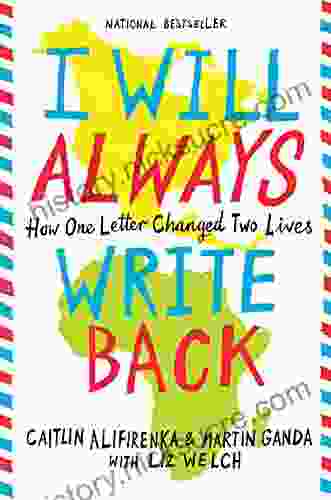
 Braeden HayesHow One Letter Changed Two Lives: A Tale of Typographic Triumph and Personal...
Braeden HayesHow One Letter Changed Two Lives: A Tale of Typographic Triumph and Personal... Marcel ProustFollow ·8.3k
Marcel ProustFollow ·8.3k Anton ChekhovFollow ·4.7k
Anton ChekhovFollow ·4.7k Andres CarterFollow ·6.4k
Andres CarterFollow ·6.4k Herman MelvilleFollow ·14.3k
Herman MelvilleFollow ·14.3k Donovan CarterFollow ·5.2k
Donovan CarterFollow ·5.2k Grayson BellFollow ·7.3k
Grayson BellFollow ·7.3k Johnny TurnerFollow ·17k
Johnny TurnerFollow ·17k Gordon CoxFollow ·3.4k
Gordon CoxFollow ·3.4k

 Bernard Powell
Bernard PowellAn Elusive World Wonder Traced
For centuries, the...
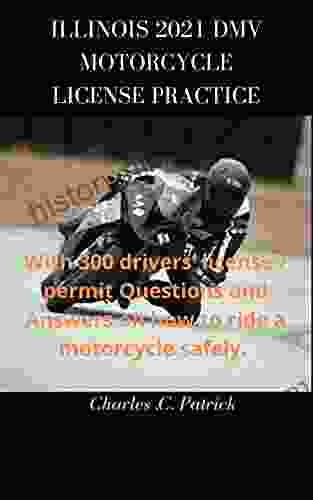
 Samuel Ward
Samuel WardAce Your Motorcycle Permit Test: 300 Essential Questions...
Obtaining a...
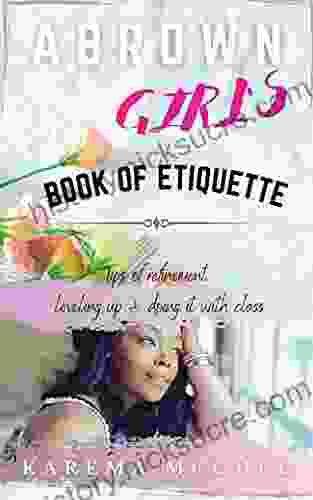
 Boris Pasternak
Boris PasternakTips for Leveling Up Refinement: Doing it With Class
Refinement is a...

 Willie Blair
Willie BlairThe Spare Room: A Haven for Art and Creativity in London
The Spare Room is a unique and inspiring...

 Howard Blair
Howard BlairThe Run-Walk-Run Method: Your Gateway to Running Success
Unlock Your Inner Runner ...
4.8 out of 5
| Language | : | English |
| File size | : | 897 KB |
| Text-to-Speech | : | Enabled |
| Screen Reader | : | Supported |
| Enhanced typesetting | : | Enabled |
| Word Wise | : | Enabled |
| Print length | : | 63 pages |
| Lending | : | Enabled |


